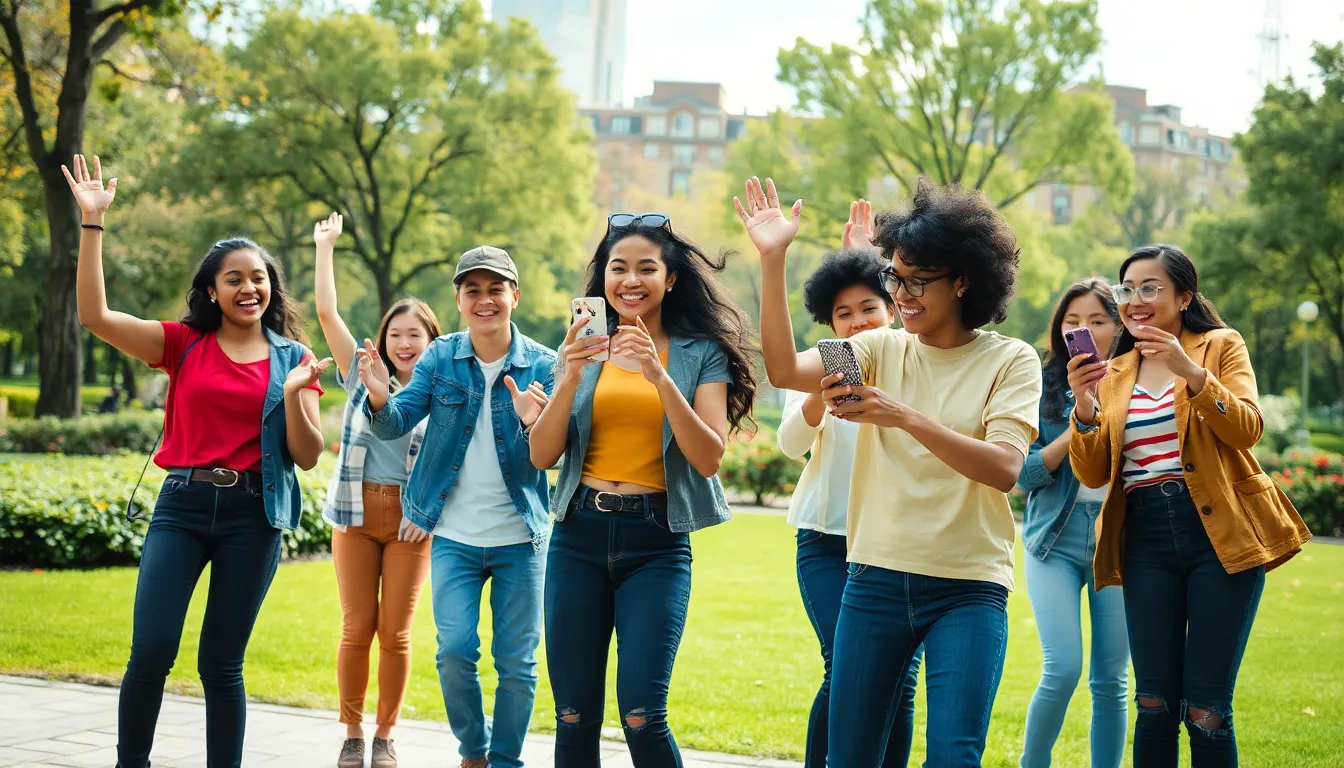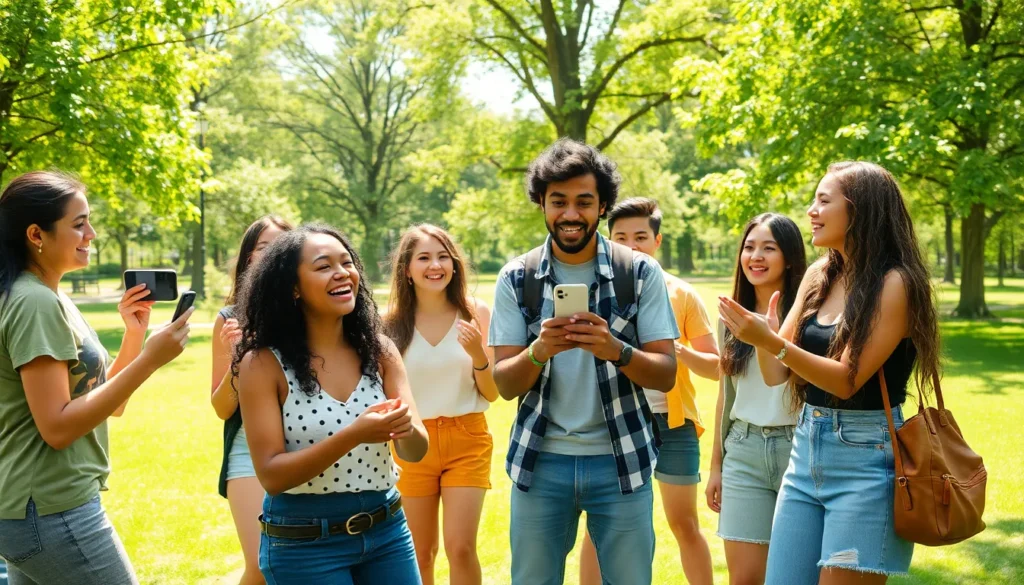In a world where a cat playing piano can steal the spotlight, viral events have become the modern-day equivalent of a gold rush. These phenomena capture attention faster than a toddler with a cookie, sparking conversations and sharing across social media platforms. From outrageous challenges to unexpected celebrity antics, the internet never fails to deliver a delightful mix of chaos and creativity.
Table of Contents
ToggleOverview of Viral Events
Viral events capture public attention rapidly, mirroring a modern gold rush. Outrageous challenges and surprising celebrity moments typically generate massive conversations. Social media plays a critical role in sharing these events, amplifying their reach. Creativity often combines with chaos, resulting in both entertaining and thought-provoking content.
The power of these events lies in their unpredictability. Platforms like Twitter, Instagram, and TikTok serve as fertile ground for their emergence. Often, a single post can spark widespread engagement in just minutes. Some viral events lead to trends that reshape cultural norms, influencing everything from fashion to language.
Participation in viral challenges often reflects community spirit. People share personal experiences related to the event, forging connections. Memes and videos typically arise, adding humor and relatability. For instance, the Ice Bucket Challenge mobilized millions to raise awareness for ALS, illustrating the potential for social impact.
Analyzing viral events reveals patterns behind their success. Emotional resonance, humor, and relatability serve as common elements. Trends also emerge from existing formats, demonstrating the significance of timing and context. Real-time interactions frequently enhance viewer engagement, encouraging shares and likes.
Social media algorithms often favor content that experiences rapid engagement. Increased visibility typically leads to greater sharing, creating a snowball effect. Notably, successful viral events can significantly impact brands and individuals, boosting recognition and follower counts. Lastly, understanding these dynamics proves essential for anyone aiming to leverage viral events effectively.
Types of Viral Events

Viral events manifest in various forms, capturing attention and engagement across platforms. Notable types include social media challenges and memes.
Social Media Challenges
Social media challenges often inspire mass participation, engaging users in creative activities. From the Ice Bucket Challenge to the Mannequin Challenge, each encourages unique expressions. Participants share videos, generating a sense of community through shared experiences. The component of competition also drives engagement, as friends and followers challenge each other. Successful challenges result in widespread visibility, spreading quickly across platforms like TikTok and Instagram.
Memes and Internet Trends
Memes represent a significant component of viral events, often encapsulating humor and commentary on current events. They spread rapidly through social media, influencing discussions and shaping cultural narratives. Images combined with relatable text resonate with users, creating a shared understanding. Internet trends, including dance or outfit challenges, also flourish as they evolve rapidly. Connectivity across platforms amplifies these trends, making them integral to online conversations and community building.
Impact of Viral Events
Viral events significantly affect culture and psychology. They shape collective behavior and attitudes in today’s digital landscape.
Cultural Influence
Cultural influence manifests through viral events as they create trends and redefine social norms. Individuals adopt new languages, fashion styles, and behaviors influenced by popular memes and challenges. For instance, the Ice Bucket Challenge raised awareness about ALS, showcasing how entertainment can further social causes. Communities rally around these events, fostering shared experiences that strengthen identities and foster solidarity. Additionally, these trends often reflect underlying societal issues, sparking discussions that challenge traditional perceptions. Viral content permeates various aspects of life, becoming part of everyday conversations and shaping collective consciousness.
Psychological Effects
Psychological effects of viral events include increased emotional engagement and social connectivity. Audiences experience a range of feelings, from joy to anger, when consuming viral content. People often share in the excitement, feeling validated through participation in trends. This desire for connection drives engagement, motivating individuals to create and share their interpretations of popular events. Moreover, witnessing others’ experiences fosters empathy, enhancing community bonds. Instant gratification derived from likes and shares reinforces positive emotions, encouraging repetition of similar behaviors. Consequently, these psychological factors contribute to the lasting impact of viral events on individuals and society.
Case Studies of Notable Viral Events
The Ice Bucket Challenge captured global attention in 2014. This social media phenomenon raised over $115 million for ALS research. Participants doused themselves with ice water while challenging others to do the same, creating widespread engagement across platforms.
In 2019, the #10YearChallenge went viral, inviting users to post side-by-side images of themselves from ten years apart. Tens of millions participated, showcasing personal growth and changes over a decade. The challenge also sparked discussions about aging and digital identity.
Another notable event, the “Distracted Boyfriend” meme surfaced in 2017. This stock photo transformed into a cultural commentary. Internet users reimagined the image to depict various scenarios, emphasizing its relatability and humor. The meme influenced how visual content is shared and created.
The “Kiki Challenge” became a viral dance phenomenon in 2018. This challenge involved participants exiting moving vehicles to dance to Drake’s “In My Feelings.” The challenge raised safety concerns but also fueled creativity. Many shared their videos on Instagram and TikTok, generating millions of views.
TikTok’s “Savage Love” dance challenge showcased the platform’s influence in 2020. Creators launched intricate dance routines to Jason Derulo’s song. The challenge attracted global participants and highlighted TikTok’s role in shaping music trends.
Lastly, the “Woman Yelling at a Cat” meme gained traction in 2019. This juxtaposition of emotions resonated deeply with users. Memes like this illustrate how viral events can encapsulate complex feelings in relatable formats, enhancing community connections through humor.
These examples emphasize the dynamic nature of viral events, capturing attention and shaping discussions in real-time.
Future of Viral Events
Anticipating the future of viral events reveals a landscape characterized by rapid evolution and creativity. Emerging technologies, including augmented reality and artificial intelligence, will likely play significant roles in shaping those events. Platforms that prioritize user-generated content are expected to thrive, fostering environments where users can unleash their creativity.
The increasing importance of data analytics will lead brands to strategically identify trends and engage target audiences. Platforms may implement algorithms that cater to enhanced user experience, ensuring higher visibility for content that resonates emotionally. Viral events will likely become more localized, allowing communities to rally around culturally relevant themes.
Social justice movements will drive viral challenges, connecting engagement with awareness of societal issues. Case studies indicate a direct correlation between viral events and social impact. Events like the Ice Bucket Challenge have shown the power of community engagement through personalized participation.
Audience expectations will evolve, requiring content to embody authenticity and relatability. Users may increasingly demand genuine interactions that challenge the superficial nature of social media. Engagement metrics will shift toward qualitative elements, emphasizing meaningful conversations over mere likes.
Collaborations among influencers and brands are poised to generate unique viral events. The fusion of different cultural narratives through diverse perspectives can enhance relatability. Memes will continue to evolve, reflecting contemporary issues and allowing audiences to engage with humor and commentary.
As the landscape evolves, brands that adapt to changing user behavior and values are likely to succeed. Staying informed on viral trends will be crucial for marketers aiming to harness their full potential. Entities must remain agile, embracing new formats and interactions that capture audience attention in real-time.
Viral events are reshaping the landscape of digital interaction and community building. Their ability to spark engagement and foster connections highlights the power of creativity and shared experiences in today’s social media environment. As platforms evolve and new technologies emerge, the nature of these events will continue to transform, offering fresh opportunities for brands and individuals alike.
Staying attuned to the dynamics of viral content is crucial for maximizing impact and visibility. With an emphasis on authenticity and relatability, the future of viral events promises to be more inclusive and socially aware, paving the way for meaningful conversations that resonate across diverse audiences. Embracing this shift can lead to greater recognition and influence in an ever-changing digital world.

